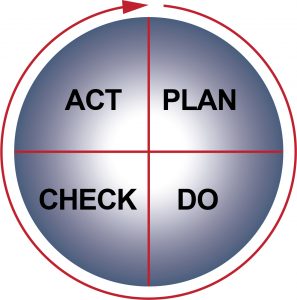Occasionally, my colleagues and I will take a step back from the day-to-day and have a more philosophical discussion about the field of ergonomics. Recently, the question was raised, “In the plan-do-check-act continuous improvement cycle, which step is the most important?” This sparked some interesting debate. Here are the arguments we came up with for each step:
|
ADVERTISEMENT |
• Plan. This is the foundation for the entire process. If you don’t have a strategic plan with goals and steps in place, how will you know what you’re working toward? This step ensures that everyone involved is aligned, knows their responsibilities, and is headed in the right direction at the start. This is probably the most commonly skipped step and, unfortunately, if it is ignored, your process may fail.

…

Comments
Great question
I often ask this question when interviewing job candidates. As you've noted, it gives great insight to the person's perspectives and interests.
Add new comment